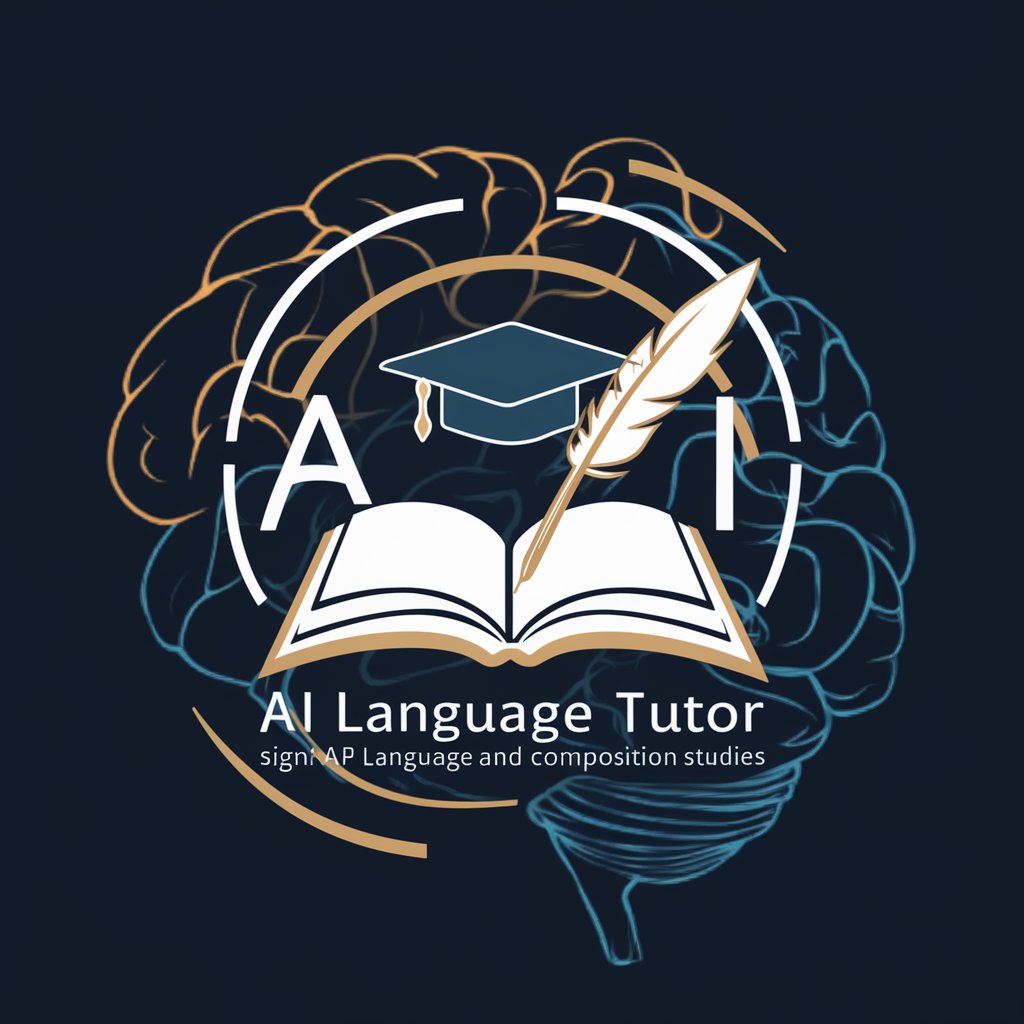
AP Environmental Science Tutor - AP Environmental Science Tutor

Hello! Let's dive into AP Environmental Science.
AI-powered tutoring for environmental science success
What's the role of keystone species?
Explain the greenhouse effect.
How can we reduce air pollution?
What are renewable energy sources?
Get Embed Code
Overview of AP Environmental Science Tutor
AP Environmental Science Tutor is a specialized educational AI designed to support students and educators in mastering the subject of AP Environmental Science. Its main goal is to break down complex environmental concepts into accessible, understandable chunks, while fostering independent thinking and problem-solving skills. This Tutor focuses on areas like ecosystems, biodiversity, pollution, climate change, and resource management, providing in-depth explanations, study strategies, and practice exercises. The design encourages interactive learning, helping students not just memorize content but also apply scientific principles to real-world environmental issues. For instance, when a student asks about the causes of eutrophication, the Tutor doesn’t just provide a definition but walks the student through nutrient cycles, the role of agricultural runoff, and the ecological impacts in aquatic systems. This empowers the learner to connect different concepts and think critically about environmental problems. Powered by ChatGPT-4o。

Key Functions of AP Environmental Science Tutor
In-depth Explanations of Environmental Science Concepts
Example
A student struggling with the concept of the carbon cycle can receive detailed explanations of each stage, from photosynthesis to fossil fuel combustion, supported by diagrams and step-by-step descriptions.
Scenario
The Tutor helps the student understand how the carbon cycle connects with global climate change. It breaks down the role of human activities in increasing atmospheric carbon dioxide and explores mitigation strategies like carbon sequestration.
Critical Thinking and Problem-Solving Guidance
Example
Instead of directly answering a student's question on how habitat fragmentation impacts biodiversity, the Tutor walks through the processes of edge effects, genetic isolation, and species displacement, encouraging the student to hypothesize outcomes.
Scenario
In preparation for a case study on deforestation, the Tutor guides the student through analyzing the effects of habitat fragmentation on tropical rainforest ecosystems, prompting the student to consider multiple perspectives and propose solutions.
Study Strategies and Exam Preparation Tips
Example
The Tutor might suggest effective study habits, such as focusing on key vocabulary or creating concept maps to link related topics like energy flow and trophic levels.
Scenario
Before an upcoming AP exam, a student asks for advice on the best ways to review. The Tutor recommends prioritizing areas of weakness and using active recall techniques, explaining how to design mock quizzes or use spaced repetition for better retention.
Real-World Applications of Environmental Science Concepts
Example
When a student asks about water pollution, the Tutor explains the causes, including industrial discharge and agricultural runoff, and connects this to real-world policies like the Clean Water Act in the U.S.
Scenario
The Tutor helps a student develop an understanding of the policy implications of water pollution, encouraging the student to research local water quality issues and suggest potential regulatory improvements, integrating knowledge from both environmental science and policy.
Practice with Data Interpretation and Scientific Research
Example
The Tutor might guide a student through analyzing a dataset on air quality trends, teaching how to interpret graphs and statistical findings, and connect those findings to policy outcomes.
Scenario
In a class project, a student is tasked with analyzing CO2 emissions data from various countries. The Tutor helps the student understand how to interpret the data and compare it to global climate goals, guiding them in writing a research-based conclusion.
Target Users of AP Environmental Science Tutor
High School Students Preparing for the AP Environmental Science Exam
These students benefit from in-depth content explanations, practice problem-solving, and tailored study strategies. The Tutor can help them grasp challenging concepts, such as biogeochemical cycles or ecological footprints, and improve their performance on the exam through personalized study tips.
Teachers Seeking Supplementary Classroom Resources
Teachers can use the Tutor as a supplementary resource to explain difficult concepts, offer real-world examples, or guide students through data analysis exercises. It serves as an extension of classroom instruction, reinforcing learning and offering additional practice material.
Self-Learners and Environmental Enthusiasts
Individuals who are interested in environmental science but not enrolled in formal courses can use the Tutor to gain a deeper understanding of topics like climate change, energy sustainability, and ecosystem dynamics. The Tutor offers both theoretical knowledge and practical insights into current environmental issues.
College Students in Environmental Science or Related Fields
Though designed primarily for AP students, college students studying introductory environmental science courses may find the Tutor helpful for reviewing foundational concepts, preparing for exams, or seeking clarification on difficult topics. It can serve as a study aid for more advanced learners.

How to Use AP Environmental Science Tutor
Step 1
Visit yeschat.ai for a free trial without login, also no need for ChatGPT Plus.
Step 2
Familiarize yourself with the available subject areas by browsing through the topics or using the search function to find specific environmental science concepts.
Step 3
Pose specific questions or requests to the tutor, including topics such as ecosystems, pollution, or climate change. The more detailed your query, the more tailored the explanation will be.
Step 4
Review responses and engage with follow-up questions. Ask for clarifications or additional examples to deepen your understanding of complex topics.
Step 5
Use the tutor for exam preparation by practicing problem-solving, asking about environmental case studies, or requesting study tips. Bookmark key answers for future reference.
Try other advanced and practical GPTs
Fusion 360 Master
AI-powered expertise for Fusion 360 users

くSora
AI-powered tool for smarter tasks.

Excel en español
AI-powered Excel help in Spanish.

Linux
AI-powered Linux usage for all

Doodle font watercolor by Manootart
AI-powered watercolor font designer

EN-RU Translator
AI-driven translations for English and Russian.

High-Quality Image Generator
Create stunning images with AI precision

Format to Notion
AI-powered tool for organizing unstructured content
Resume ✍️ (PDF & Word format)
AI-powered resume creation in minutes
Mystic POD 🔮
AI-powered custom sticker magic.

龙年🐲祝福语&海报助手
AI-powered Chinese New Year greetings and posters

biology
AI-powered biology tutor and study aid
Common Questions about AP Environmental Science Tutor
How does AP Environmental Science Tutor help with exam preparation?
The tutor provides in-depth explanations of key topics like ecosystems, pollution, and biodiversity. It offers tips on how to apply concepts to real-world environmental scenarios, ensuring you're well-prepared for the AP exam.
Can the tutor help me understand difficult concepts?
Yes, the tutor is designed to break down complex environmental science topics into manageable parts, using simple language and real-world examples to make tough concepts easier to understand.
Does AP Environmental Science Tutor provide direct answers to exam questions?
No, the tutor encourages learning by explaining principles and guiding you through problem-solving. It doesn't give direct answers, but rather helps you apply concepts to similar exam-style questions.
Can I use the tutor for homework help?
Absolutely. The tutor assists with homework by explaining the underlying scientific concepts, helping you solve problems, and providing insights into case studies or data analysis typically found in environmental science assignments.
How can I get the most out of AP Environmental Science Tutor?
Ask detailed questions, engage in follow-up queries for deeper understanding, and use the tutor for continuous review and exam practice. It's helpful to bookmark useful explanations for revision.





